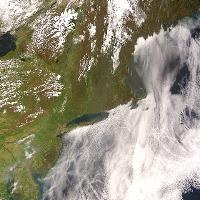(COPENHAGEN) – Rising sea levels, extreme weather such as intense heat waves, flooding, droughts and storms pose increasingly severe risks to Europe’s ecosystems, human health and economy, says a new report.
The report ‘Climate change, impacts and vulnerability in Europe 2016’, from the Copenhagen-based European Environment Agency, assesses the latest trends and projections on climate change and its impacts across Europe, and finds that better and more flexible adaptation strategies, policies and measures will be crucial to lessen these impacts.
Changes in climate are already having wide-ranging impacts on ecosystems, the economy and on human health and well-being in Europe, with new records continuing to be set on global and European temperatures, sea levels and reduced sea ice in the Arctic.
Precipitation patterns are changing, generally making wet regions in Europe wetter and dry regions drier. Glacier volume and snow cover are decreasing.
At the same time, climate-related extremes such as heat waves, heavy precipitation and droughts, are increasing in frequency and intensity in many regions. Improved climate projections provide further evidence that climate-related extremes will increase in many European regions.
While climate change is set to continue for decades to come, the scale of future climate change and its impacts depend on “the effectiveness of implementing our global agreements to cut greenhouse gas emissions, but also ensuring that we have the right adaptation strategies and policies in place to reduce the risks from current and projected climate extremes,”, says the EEA’s Hans Bruyninckx.
While all European regions are vulnerable to climate change, some regions will experience more negative impacts than others, says the report.
Southern and south-eastern Europe is projected to be a climate change hotspot, expected to face the highest number of adverse impacts. This region is already experiencing large increases in heat extremes and decreases in precipitation and river flows, which have heightened the risk of more severe droughts, lower crop yields, biodiversity loss and forest fires. More frequent heat waves and changes in the distribution of climate-sensitive infectious diseases are expected to increase risks to human health and well-being.
Coastal areas and floodplains in western parts of Europe are also seen as hotspots as they face an increased risk of flooding from rising sea levels and a possible increase in storm surges. Climate change is also leading to major changes in marine ecosystems as a result of ocean acidification, warming and the expansion of oxygen-depleted dead zones.
Ecosystems and human activities in the Arctic will also be strongly affected owing to the particularly rapid increase in air and sea temperatures and the associated melting of land and sea ice.
Although some regions may also experience some positive impacts, such as improving conditions for agriculture in parts of northern Europe, most regions and sectors will be negatively affected.



